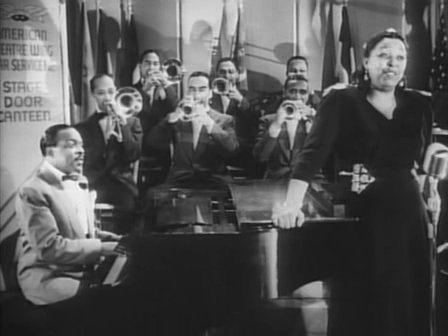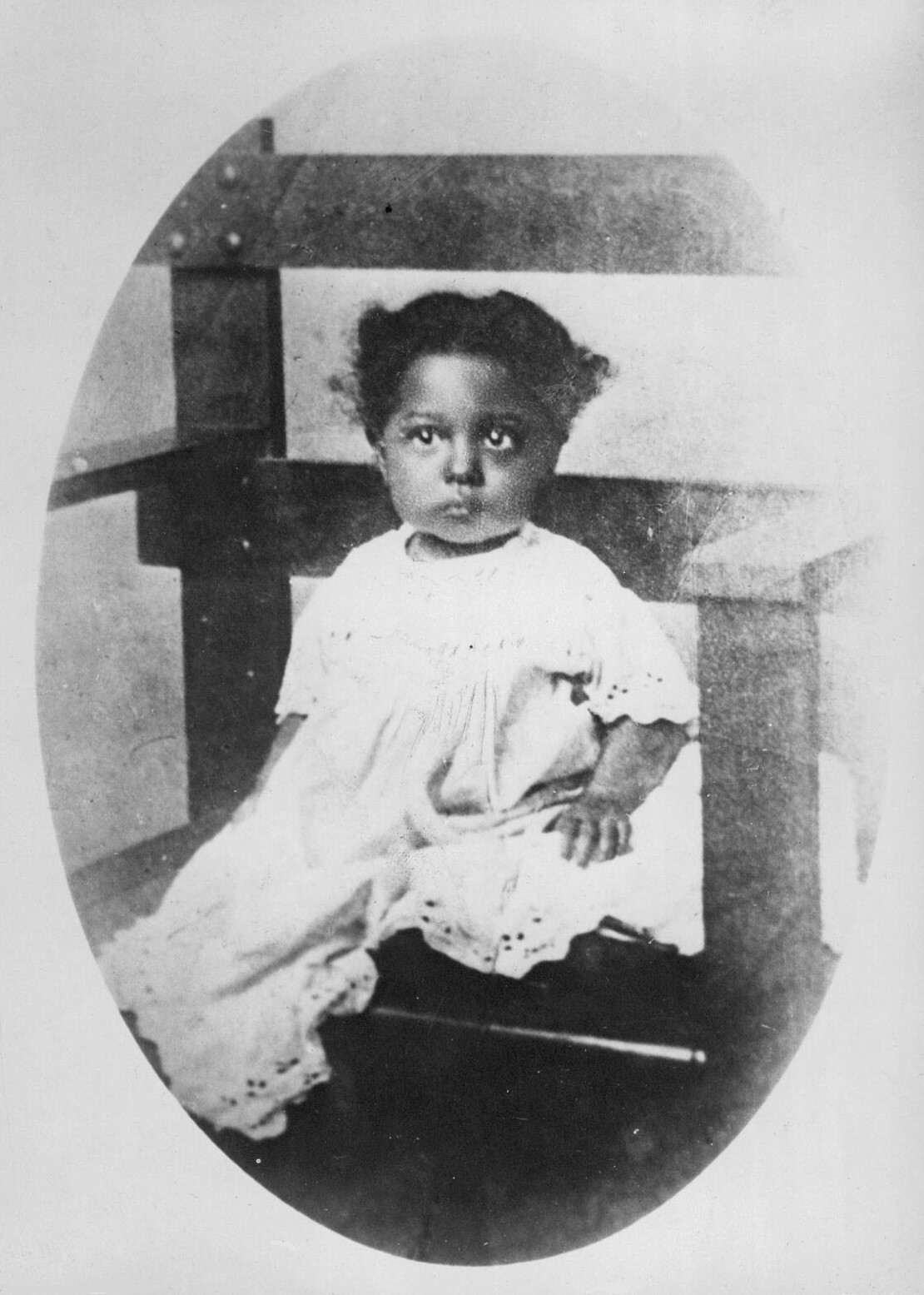|
Charles H. Turpin
Charles H. Turpin (died 1935) was a constable filmmaker, theater owner, and judge in St. Louis, Missouri. In 1910, he became the first African American elected to city-wide office in St. Louis. A legal dispute contested his estate. He was born in Ohio and moved with his family to Mississippi for a few years as a child. Tom Turpin, a musician and ragtime composer, was his brother. Saloon owner and businessman John L. Turpin, proprietor of the Silver Dollar Saloon in St. Louis was their father. In 1913 he arranged to build a 1-story theater building in St. Louis. He served as a constable in St. Louis Fourth District. The ''St. Louis Post-Dispatch'' advised readers not to re-elect him as constable. In 1937, ''Time'' magazine referred to him as a " taffy-colored Republican". Turpin was also involved in filmmaking. He produced short documentary films. Thomas Million John Turpin Jr. was his brother. He owned the Booker T. Washington theater in St. Louis. Charles Udell Turpin was his ... [...More Info...] [...Related Items...] OR: [Wikipedia] [Google] [Baidu] |
Constable
A constable is a person holding a particular office, most commonly in criminal law enforcement. The office of constable can vary significantly in different jurisdictions. A constable is commonly the rank of an officer within the police. Other people may be granted powers of a constable without holding this title. Etymology Historically, the title comes from the Latin ''comes stabuli'' ( attendant to the stables, literally ''count of the stable'') and originated from the Roman Empire; originally, the constable was the officer responsible for keeping the horses of a lord or monarch.p103, Bruce, Alistair, ''Keepers of the Kingdom'' (Cassell, 2002), Constable Encyclopædia Britannica online The title was imported to the monarchy, monarchies of Middle Ages, medieval Europe, and in many countries developed into a high military rank an ... [...More Info...] [...Related Items...] OR: [Wikipedia] [Google] [Baidu] |
Tom Turpin
Thomas Million John Turpin (November 18, 1871 – August 13, 1922) was an African American composer of ragtime music. Tom Turpin was born in Savannah, Georgia, a son of John L. Turpin and Lulu Waters Turpin. In his early twenties he opened a saloon in St. Louis, Missouri which became a meeting-place for local pianists and an incubation point for early folk ragtime, such as musician Joe Jordan. Turpin himself is credited with the first published rag by an African-American, his "Harlem Rag" of 1897 (it was composed by 1892, a year before ragtime's introduction to the world at the 1893 Worlds Fair). His other published rags include "Bowery Buck," "Ragtime Nightmare," "St. Louis Rag," and "The Buffalo Rag". Turpin was a large man, six feet (1.83 m) tall and 300 pounds (136 kg); his piano had to be raised on blocks so that he could play it standing up, otherwise his stomach would get in the way. In addition to his saloon-keeping duties and his ragtime composition, he contr ... [...More Info...] [...Related Items...] OR: [Wikipedia] [Google] [Baidu] |
Time (magazine)
''Time'' (stylized in all caps) is an American news magazine based in New York City. For nearly a century, it was published Weekly newspaper, weekly, but starting in March 2020 it transitioned to every other week. It was first published in New York City on March 3, 1923, and for many years it was run by its influential co-founder, Henry Luce. A European edition (''Time Europe'', formerly known as ''Time Atlantic'') is published in London and also covers the Middle East, Africa, and, since 2003, Latin America. An Asian edition (''Time Asia'') is based in Hong Kong. The South Pacific edition, which covers Australia, New Zealand, and the Pacific Islands, is based in Sydney. Since 2018, ''Time'' has been published by Time USA, LLC, owned by Marc Benioff, who acquired it from Meredith Corporation. History ''Time'' has been based in New York City since its first issue published on March 3, 1923, by Briton Hadden and Henry Luce. It was the first weekly news magazine in the United St ... [...More Info...] [...Related Items...] OR: [Wikipedia] [Google] [Baidu] |
Taffy (candy)
Taffy is a type of candy invented in the United States, made by stretching or/and pulling a sticky mass of a soft candy base, made of boiled sugar, butter, vegetable oil, flavorings, and colorings, until it becomes aerated (tiny air bubbles produced), resulting in a light, fluffy and chewy candy. When this process is complete, the taffy is rolled, cut into small pieces and wrapped in wax paper to keep it soft. It is usually pastel-colored and fruit-flavored, but other flavors are common as well, including molasses and the "classic" (unflavored) taffy. Definition and etymology The word ''taffy'', referring to the boiled candy, is first known to have appeared in the United States circa 1817. The word is also used metaphorically to refer to insincere flattery. The ''Oxford English Dictionary'' dates the first written record of the word ''toffee'' in the forms ''tuffy, toughy'' to 1825 and identifies it as a southern British dialectal variant of ''taffy'' (first recorded use in ... [...More Info...] [...Related Items...] OR: [Wikipedia] [Google] [Baidu] |
Airdome
An air-supported (or air-inflated) structure is any building that derives its structural integrity from the use of internal pressurized air to inflate a pliable material (i.e. structural fabric) envelope, so that air is the main support of the structure, and where access is via airlocks. The first air-supported structure built in history was the radome manufactured at the Cornell Aeronautical Laboratory in 1948 by Walter Bird. The concept was implemented on a large scale by David H. Geiger with the United States pavilion at Expo '70 in Osaka, Japan in 1970. It is usually dome-shaped, since this shape creates the greatest volume for the least amount of material. To maintain structural integrity, the structure must be pressurized such that the internal pressure equals or exceeds any external pressure being applied to the structure (i.e. wind pressure). The structure does not have to be airtight to retain structural integrity—as long as the pressurization system that supplies i ... [...More Info...] [...Related Items...] OR: [Wikipedia] [Google] [Baidu] |
Clara Smith
Clara Smith (March 13, 1894 – February 2, 1935) was an American classic female blues singer, billed as the "Queen of the Moaners", although she had a lighter and sweeter voice than many of her contemporaries. Clara Smith was not related to the singers Bessie Smith and Mamie Smith. Early life Clara Smith was born to parents Selena and William Smith in Spartanburg County, South Carolina, Spartanburg County, South Carolina. She is not believed to have any siblings. She never was enrolled in school but was recorded on the census as able to read and write. Blues historians thinks that Smith most likely was introduced in her youth to "traveling tent shows", that frequently stopped in Spartanburg and sparked her interest in performance. Career In 1910, Smith began working on African-American theater circuits, in tent shows, and vaudeville. By 1918, she was appearing as a headliner with the Theater Owners Bookers Association circuit across Southern states. By 1923, she had perfor ... [...More Info...] [...Related Items...] OR: [Wikipedia] [Google] [Baidu] |
Bessie Smith
Bessie Smith (April 15, 1894 – September 26, 1937) was an American blues singer widely renowned during the Jazz Age. Nicknamed the " Empress of the Blues", she was the most popular female blues singer of the 1930s. Inducted into the Rock and Roll Hall of Fame in 1989, she is often regarded as one of the greatest singers of her era and was a major influence on fellow blues singers, as well as jazz vocalists. Born in Chattanooga, Tennessee, Smith was young when her parents died, and she and her six siblings survived by performing on street corners. She began touring and performed in a group that included Ma Rainey, and then went out on her own. Her successful recording career with Columbia Records began in 1923, but her performing career was cut short by a car crash that killed her at the age of 43. Biography Early life The 1900 census indicates that her family reported that Bessie Smith was born in Chattanooga, Tennessee, in July 1892. The 1910 census gives her age as ... [...More Info...] [...Related Items...] OR: [Wikipedia] [Google] [Baidu] |
Ethel Waters
Ethel Waters (October 31, 1896 – September 1, 1977) was an American singer and actress. Waters frequently performed jazz, swing, and pop music on the Broadway stage and in concerts. She began her career in the 1920s singing blues. Her notable recordings include "Dinah", " Stormy Weather", "Taking a Chance on Love", "Heat Wave", "Supper Time", " Am I Blue?", " Cabin in the Sky", "I'm Coming Virginia", and her version of "His Eye Is on the Sparrow". Waters was the second African American to be nominated for an Academy Award, the first African American to star on her own television show, and the first African-American woman to be nominated for a Primetime Emmy Award. Early life Waters was born in Chester, Pennsylvania on October 31, 1896 (some sources incorrectly state her birth year as 1900) as a result of the rape of her teenaged African-American mother, Louise Anderson (1881–1962), by 17 year old John Wesley (or Wesley John) Waters (1878–1901), a pianist and family acq ... [...More Info...] [...Related Items...] OR: [Wikipedia] [Google] [Baidu] |
Bill Robinson
Bill Robinson, nicknamed Bojangles (born Luther Robinson; May 25, 1878 – November 25, 1949), was an American tap dancer, actor, and singer, the best known and the most highly paid African-American entertainer in the United States during the first half of the 20th century. His long career mirrored changes in American entertainment tastes and technology. His career began in the age of minstrel shows and moved to vaudeville, Broadway theatre, the recording industry, Hollywood films, radio, and television. According to dance critic Marshall Stearns, "Robinson's contribution to tap dance is exact and specific. He brought it up on its toes, dancing upright and swinging," adding a "hitherto-unknown lightness and presence." His signature routine was the stair dance, in which he would tap up and down a set of stairs in a rhythmically complex sequence of steps, a routine that he unsuccessfully attempted to patent. He is also credited with having popularized the word ''copacetic'' throug ... [...More Info...] [...Related Items...] OR: [Wikipedia] [Google] [Baidu] |
Josephine Baker
Josephine Baker (born Freda Josephine McDonald; naturalised French Joséphine Baker; 3 June 1906 – 12 April 1975) was an American-born French dancer, singer and actress. Her career was centered primarily in Europe, mostly in her adopted France. She was the first black woman to star in a major motion picture, the 1927 silent film '' Siren of the Tropics'', directed by and . During her early career, Baker was among the most celebrated performers to headline the revues of the in Paris. Her performance in the revue in 1927 caused a sensation in the city. Her costume, consisting of only a short skirt of artificial bananas and a beaded necklace, became an iconic image and a symbol both of the Jazz Age and the Roaring Twenties. Baker was celebrated by artists and intellectuals of the era, who variously dubbed her the "Black Venus", the "Black Pearl", the "Bronze Venus", and the "Creole Goddess". Born in St. Louis, Missouri, she renounced her U.S. citizenship and became a Frenc ... [...More Info...] [...Related Items...] OR: [Wikipedia] [Google] [Baidu] |
Year Of Birth Missing
A year or annus is the orbital period of a planetary body, for example, the Earth, moving in its orbit around the Sun. Due to the Earth's axial tilt, the course of a year sees the passing of the seasons, marked by change in weather, the hours of daylight, and, consequently, vegetation and soil fertility. In temperate and subpolar regions around the planet, four seasons are generally recognized: spring, summer, autumn and winter. In tropical and subtropical regions, several geographical sectors do not present defined seasons; but in the seasonal tropics, the annual wet and dry seasons are recognized and tracked. A calendar year is an approximation of the number of days of the Earth's orbital period, as counted in a given calendar. The Gregorian calendar, or modern calendar, presents its calendar year to be either a common year of 365 days or a leap year of 366 days, as do the Julian calendars. For the Gregorian calendar, the average length of the calendar year (the mea ... [...More Info...] [...Related Items...] OR: [Wikipedia] [Google] [Baidu] |







